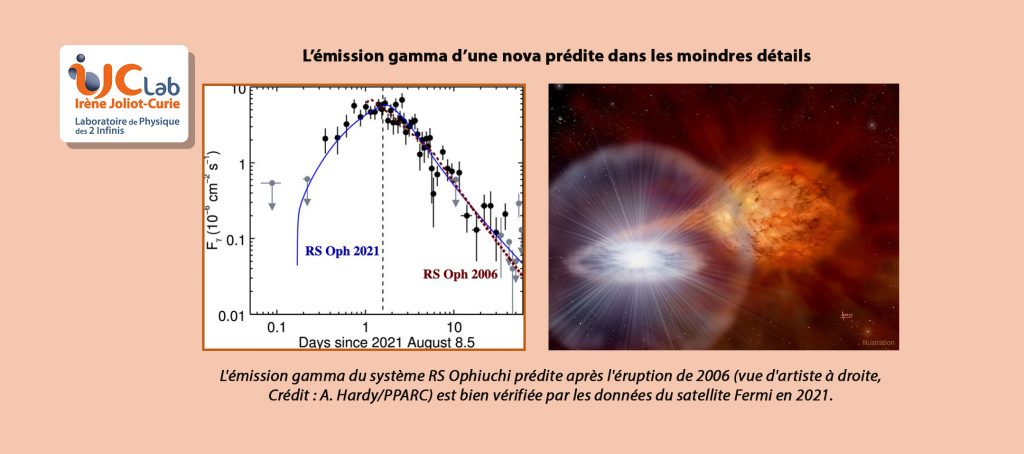
On August 8, 2021, a “new” star appeared in the constellation of Ophiuchus and remained visible to the naked eye for several days. In fact, it had already been observed six times in the past: in 1898, 1933, 1958, 1967, 1985 and 2006. RS Ophiuchi is a recurring nova located about 5,000 light years away, which erupts every 10 at 20 years (two other eruptions in 1907 and 1945 have been inferred from archival data). It is an unstable binary system made up of a red giant star and a white dwarf, which regularly experiences tremendous thermonuclear explosions.
The 2006 flare was observed with radio, infrared and X-ray telescopes. These observations revealed a shock wave traveling at thousands of kilometers per second in the winds of the red giant star. Vincent Tatischeff (A2C Pole, Astrophysics and Cosmochemistry Team) and Margarita Hernanz (Institut de Ciències de l’Espai, Barcelona) then predicted an acceleration of protons in this shock wave to energies of several teraelectronvolts and a gamma emission potentially observable for several days after the explosion. But the model was unverifiable at the time for lack of a gamma telescope in operation.
The last eruption of RS Oph in 2021 could be observed both by the Large Area Telescope (LAT) of the Fermi mission, launched in 2008, and by the Cherenkov imaging telescopes HESS in Namibia and MAGIC in the Canary Islands. This is the first time that such an explosion in our galaxy has been observed in very high energy gamma rays by ground-based telescopes. These observations, which were recently published, essentially confirm the predictions of the model with remarkable accuracy: nature and energy of the accelerated particles, gamma light curve, etc. RS Oph has thus become a key object for studying the microphysics of particle acceleration in astrophysical shock waves.









